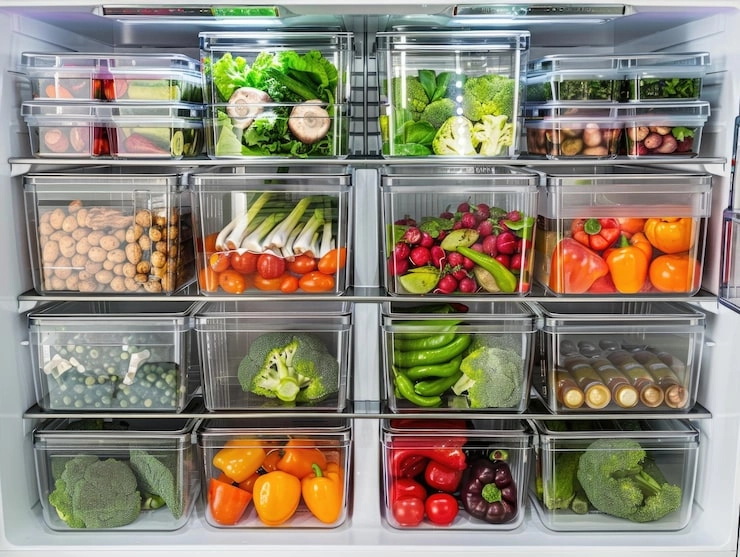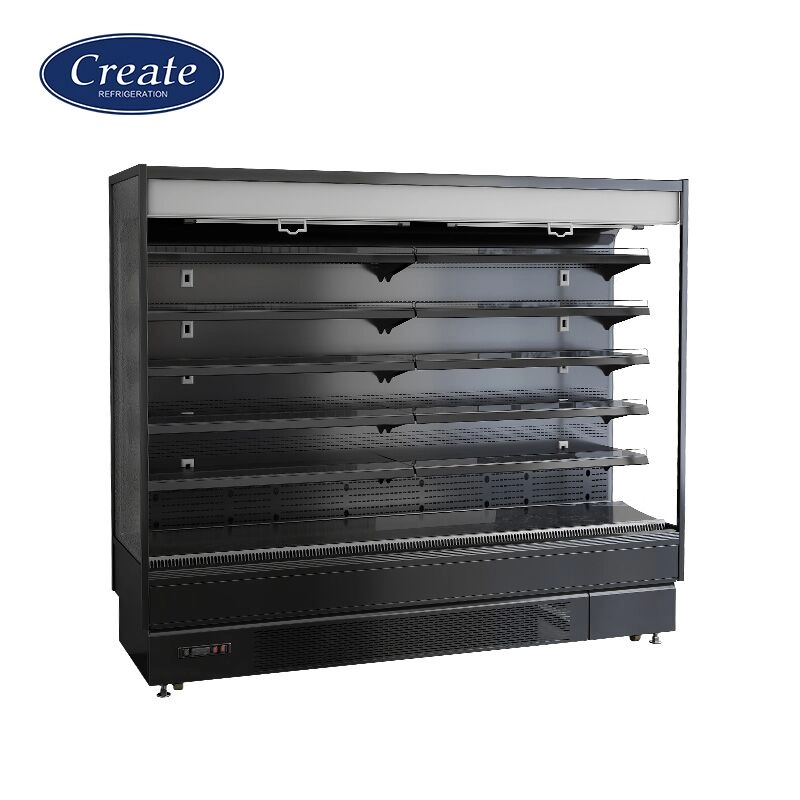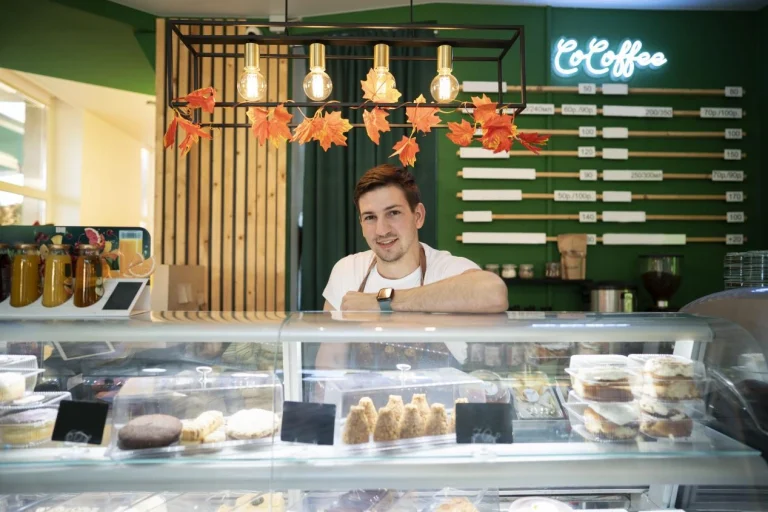
Keeping your fridge and freezer just right is a big deal. It keeps your food safe, tasty, and stops you from tossing stuff out. Whether you’re cooking at home or running a crazy-busy restaurant, knowing the best temps saves your groceries and keeps folks healthy. Temp matters a lot. It stops yucky germs from growing too fast. Most bad bugs love hanging out between 40°F (4°C) and 140°F (60°C). People call this the “danger zone.” By picking the right temps, you put those germs on ice. Your food stays good way longer.
Recommended Fridge and Freezer Temps
To keep food yummy and safe, you gotta set your fridge and freezer right. Let’s check out what works best.
Best Fridge Temp Range
The sweet spot for a fridge is 35°F to 38°F (1.6°C to 3.3°C). It’s cold enough to slow down germs. But it won’t turn your lettuce or milk into popsicles. If it gets above 40°F (4.4°C), watch out. Bad germs like Listeria or Salmonella can go wild. That’s a mess you don’t need.
Perfect Freezer Temp Range
For freezers, aim for 0°F (-18°C) or even colder. At this frosty temp, germs and bugs hit the snooze button. You can store food for months without it going bad. This trick works for home kitchens and big pro ones too.
How to Check Temps Right
Those built-in fridge thermometers? They can be kinda sketchy. To get the real deal, stick a thermometer in the middle of your fridge or freezer. Digital ones are way better than old-school kinds. They give you clear, spot-on numbers. This is super key in busy kitchens. You need things to stay steady, no matter what.
Best Storage Temps for Different Foods
Not all foods like the same vibe. Each type needs its own temp to stay fresh and safe. Also, setting up your fridge smart helps air move around. That keeps everything running nice and smooth.
Fruits and Veggies
Fruits and veggies can be super picky about temp and dampness. And nope, not every fruit belongs in the fridge.
- Fruits to Keep Cold: Berries, grapes, cherries, and apples love 32°F to 40°F (0°C to 4.4°C). Pop them in crisper drawers with lots of dampness. It keeps them crisp and delicious.
- Fruits to Leave Out: Tropical stuff like bananas, mangoes, tomatoes, and whole melons hate cold. Keep them on the counter. But if you cut them up, toss them in the fridge quick.
- Veggies: Leafy stuff like lettuce and spinach does great at 32°F to 36°F (0°C to 2.2°C). Root veggies, like carrots or beets, are cool just above freezing but under 40°F (4.4°C).
- Tips to Stop Spoiling: Some fruits, like apples and bananas, give off a gas called ethylene. Keep them away from veggies like broccoli or lettuce. Why? That gas makes veggies ripen too fast and go bad. Use bags with holes or crisper drawers you can tweak to control dampness.
Meat, Poultry, and Seafood
These foods spoil crazy fast. So, you gotta be strict with temps.
- Raw Meat and Poultry: Put these on the bottom shelf at 40°F (4°C) or less. Even better, go for 34°F to 36°F (1°C to 2°C). For freezing, keep them at 0°F (-18°C) or colder. Use containers that won’t leak. Nobody wants meat juice dripping on other stuff.
- Cooked Meats and Deli Stuff: These need to stay below 40°F (4°C) too. Stick them in tight containers on higher shelves. Those spots don’t change temp as much.
Dairy and Eggs
Dairy stuff hates temp swings.
- Milk, Cheese, and Yogurt: Milk likes 34°F to 38°F (1°C to 3°C). Cheese is okay a bit warmer but still needs to be under 40°F (4.4°C). Yogurt’s happy around 36°F (2.2°C).
- Eggs: Keep eggs at a steady 37°F (3°C). Store them in their carton on an inside shelf. The door’s too shaky with temps going up and down.
Frozen Foods
For keeping food frozen a long time, you need really cold temps. This locks in flavor and texture. Don’t stuff your freezer too full. Air’s gotta move around. Also, don’t thaw and refreeze stuff. It makes big ice chunks that mess up meats and veggies. They’ll turn mushy when you cook them.
Things That Mess with Fridge Performance
A couple things can throw your fridge off its game.
- Where You Put Stuff: Don’t block air vents with big containers. That way, cold air flows nice and even.
- Opening the Door: If you keep opening the door, warm air sneaks in. That bumps up the temp. It’s worse in hot weather or super busy kitchens.
- Thermostat Problems: Built-in dials usually show an average temp. They don’t tell you about specific spots. So, use extra thermometers if you’ve got sensitive foods in different places.
Picking the Right Fridge Gear
For businesses, good fridge stuff is a total game-changer. It saves power, keeps food safe, and lasts forever.
Features to Look For
When you’re picking a fridge, go for one with multi-zone cooling. Look for power-saving compressors, LED lights, and shelves you can move around. In pro kitchens, stuff like auto-defrost, dampness controls, digital thermostats, and anti-fog glass doors is awesome. Digital controls are the best. They give you exact temp numbers, way better than clunky old dials.
An Example in Commercial Solutions: Create Refrigeration
For killer commercial fridges, Create Refrigeration really stands out. It is based in Shandong, China, is a favorite for supermarkets and convenience stores all over. They make island cabinets for frozen stuff, air curtain coolers with double-layer airflow, and glass-door fridges with self-closing doors. Their gear uses eco-friendly R290 refrigerants and inverter compressors. Those can cut power use by up to 50%. Plus, they offer custom sizes, OEM/ODM support, fast shipping, and global DDP shipping. That makes them a solid pick for cold chain businesses.

Wrapping It Up
Storing food at the right temps is huge. It keeps things safe and yummy, whether you’re at home or in a pro kitchen.
- Keep fridges at 35–38°F (1.6–3.3°C).
- Set freezers to 0°F (-18°C) or below.
- Use a thermometer to check temps for real.
- Sort foods by what they need. Let air flow free.
- For businesses, grab modern, trusty fridge gear.
By sticking to these tips, you’ll waste less. Your food will stay fresh. And you’ll keep things safe all year long.
FAQs
Q1: What’s the best fridge temp for keeping food fresh?
A: The sweet spot is 35°F to 38°F (1.6°C to 3.3°C). It slows down germs. Plus, it keeps your veggies and dairy tasty without freezing.
Q2: What’s the right freezer temp?
A: Aim for 0°F (-18°C) or colder. This puts germs to sleep. You can store meats, seafood, and meals safely for months.
Q3: How do I know if my fridge is at the right temp?
A: Stick a thermometer in the middle of your fridge. Built-in dials can be off. This gives you the true number.




















